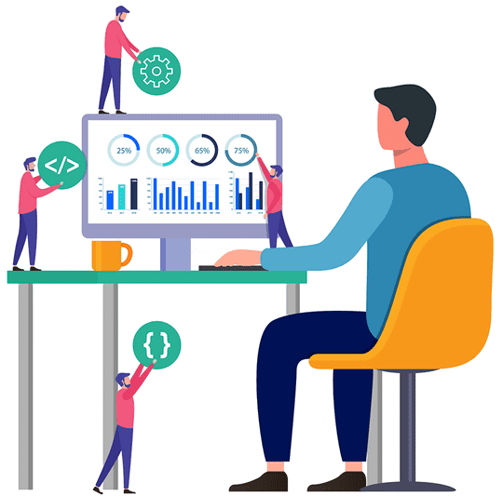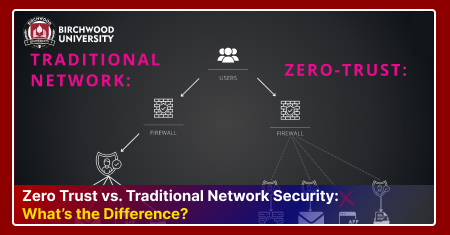Top 10 Data Science Tools in Demand in 2023
Mar 15, 2023Data science is a broad field characterized by the constant change in the use of tools for data exploration, visualization, machine learning, deep learning, statistical analysis, or NLP approaches. Today the world is presented with countless tools and data science techniques to meet every demand.
Data science is the method of employing an iterative process to draw conclusions from unprocessed data and transform them into useful information. Data scientists are interested in improving process efficiency, which necessitates their familiarity with the whole range of data science techniques and technologies required for the job. Any job concerning data is powered by a data science framework. Through this article, let us delve into the nuance of data science techniques and the tools for data science that has helped the growth of the discipline and its widespread use in today’s technology-driven world.
Introduction to Data Science
Data science is the process of extracting practical knowledge from unstructured data using a variety of tools, including domain knowledge, mathematical and statistical understanding, programming skills, and machine learning models. Business users and important decision-makers later translate the insights into a real company value.
Defining Data Science Framework
A data science framework can be simply defined as a group of libraries that offer data mining capability, methods of exploring data, cleaning up data, and putting it into a more usable format for processing data or machine learning activities. The entire procedure entails creating visualizations to draw conclusions from your data.

Top Tools for Data Science
Data science tools are widely available on the market. Check out the list of the top tools for data science below to decide which ones to choose and learn for your job. There are numerous data science masters program facilities from which you can learn and become an expert and obtain the prowess of handling data science frameworks.
Best Tools for Data Science
1. System for Statistical Analysis (SAS)
The SAS Institute created SAS, a statistical and sophisticated analytics tool. It is one of the earliest tools for data analysis and was created primarily for statistical operations. Professionals and businesses that rely heavily on sophisticated analytics and intricate statistical operations frequently use SAS. Several statistical libraries and tools are provided by this dependable commercial program, which can be utilized for modeling and arranging the provided data.
SAS’s Features include:
• Several lessons and committed technical support make it simple and easy to learn
• Strong reports produced via a straightforward GUI
• Carries out text content analysis, including typo detection
• Provide access to a well-managed set of tools for data mining, statistical analysis, clinical trial analysis, business intelligence applications, econometrics, and time-series analysis.
2. Apache Hadoop
Apache Hadoop is useful for its capability to store and manage a lot of data. It is an open source that aids in the distributed processing and computation of massive datasets over a cluster of thousands of machines. It is the perfect tool for handling complex calculations and handling enormous amounts of data.
Its features Include:
• Effective scaling of massive volumes of data over hundreds of Hadoop clusters
• Parallel processing and storing of data using Hadoop Distributed File System (HDFS)
• High availability and fault tolerance even in adverse circumstances.
• Integrates capabilities with a variety of other data processing modules, including Hadoop YARN, Hadoop MapReduce, and others.
3. Tableau
Tableau essentially is software for developing interactive visualizations of data known for featuring strong visuals. Tableau also can communicate with various spreadsheets, OLAP cubes, databases, etc. Coupled with these powers, Tableau can also display geographic data by mapping out longitudes and latitudes.
Its features also include the following:
• Linking with numerous data sources for extraction of insights
• Visualization power of huge datasets for patterns and correlation
• A desktop function that creates customized reports and dashboards for gaining real-time insights and updates.
• Making calculated fields and joining tables is possible using the cross-database join functionality to address challenging data issues.
4. TensorFlow
TensorFlow is a potent library that revolves around deep learning, machine learning, and artificial intelligence algorithms and aids in developing and training models before deploying them on various platforms, including servers, computers, and smartphones, to carry out the functions specified for each model. TensorFlow is widely used in both production and research and is highly preferred by data scientists given its numerical computation job by using data flow graphs. TensorFlow is quick, highly adaptable, and scalable, and it is an open-source library.
Its features are:
• Enabling the deployment of computing on a variety of platforms, including servers, CPUs, and GPUs.
• Provides strong capabilities for manipulating and filtering data to perform data-driven numerical computations.
• Flexible for running deep learning and machine learning procedures
5. Knime
Knime is a tool that enables data scientists with the ability to combine technologies and data kinds. It is a platform with open source.
Its features include:
• Great for repetitive and time-intensive tasks
• Integrates various data science components by using the Lego of Analytics
• Easy-to-use GUI
• Compatible with a wide range of systems and data sources
6. PowerBI
The technology used to build a data analytics dashboard and make the dataset cohesive is called PowerBI. Rich insights are generated by the PowerBI platform. PowerBI’s visualization tools are so appealing that they can be used to create a visual report that any reader or viewer can understand at a single glance.
Its features are:
• Employable in conjunction with further Microsoft data science products for data visualization.
• Data analytics dashboards can be made with its assistance.
• Transforming inconsistent datasets into consistent datasets.
• Creating logically sound datasets and producing insightful data.
• Facilitates developing visually appealing reports that non-technical professionals can understand
7. Excel
Excel is a sophisticated analytical tool that is widely used in the field of data science because it makes it possible to create spreadsheets and data visualizations that are excellent for thorough data analysis. In addition to its extensive library of formulas, tables, filters, slicers, and other features, Excel also lets users build their own unique formulas and functions. It can also be linked to SQL and utilized for additional data manipulation and analysis.
The features of Excel include:
• Good for Analyzing and cleansing up 2D data
• Facilitates quick and easy datasets exploration by sorting and filtering
• Provides pivot tables to present data in a tabular style and perform operations such as sum, count, and other metrics.
8. R (Rstudio)
R Studio is a platform that offers a comprehensive set of tools for data analysis. Users may handle and save data effectively with the help of R studio.
The following are the main features of R:
• A vast and well-organized array of data analysis tools
• Provides efficient data handling and storage options
• Ideal for statistical design, analysis, and computation
• Offers graphical features for data analysis and displays the results on paper or a computer screen.
9. Python
It is amongst the most widely used language in today’s data science field. It is versatile, open-source in nature, has simple grammar, and can handle, clean, manipulate, visualize, and analyze data. In essence, Python was created as a programming language. Yet, it provides a large selection of libraries that appeal to both programmers and data scientists.
Its major features are:
Performs efficient analysis, visualization, cleansing, and modification of data
Offers a variety of libraries, including Matplotlib, NumPy, and pandas, among others.
Aids in connecting with numerous other tools, like Desk and Cython.
10. Google Analytics
Data scientists are also essential in the field of digital marketing. One of the most effective data science tools for digital marketing is Google Analytics.
The following are some of Google Analytics’ main functions and applications:
• Access, analyze, and visualize data to assist web administrators in better understanding the manners users interact with websites.
• Helps to improve marketing decisions by identifying and utilizing the data trail left by website users.
• User-friendly even for non-technical workers to undertake data analyses.
Those are the top 10 tools for data science in high demand. You can master all these data science techniques by taking enrolling in a Data Science masters program that will equip you not just with these tools but also with the necessary skills and knowledge of performing as a competent data scientist.






